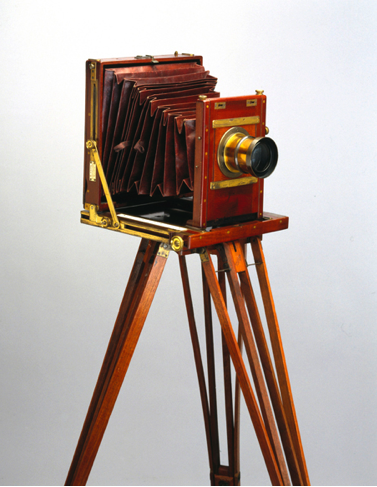This post was written by Tara Knights, a work placement student with the Research & Public History department from Sussex University’s MA Art History and Museum Curating.
These days most of us have a camera the size of our mobile phone. We can effortlessly take pictures of anything and everything, but what role did photography play in the lives of our ancestors? In this second of a series of blog posts, we will continue to explore the lives of our ancestors by looking at bags from the Science Museum’s collections.
Our ancestors’ photographs tend to look very formal. The family members are often positioned according to age, sex, height and importance. These photographic records may tell us tales about those in front of the camera, but what do we actually know about the people behind it?

This camera was made by George Hare, who was born in York around 1828 (d.1913). It doesn’t use film, but a separate glass plate for each negative. To adjust the focus the photographer had to change the distance between the lens and the glass plate by extending or collapsing the bellows. This camera design was advertised at the time as ‘the best and most compact camera ever invented.’
Originally, George Hare was a cabinet maker trained by his father. After setting up his London-based cabinet business, George switched to camera manufacturing. From 1876 until his death, Hare’s company address remained at 26 Calthorpe Street, London.

Despite his camera manufacturing business doing well his son (and apprentice) James “Jimmy” Hare (1856-1946) thought it could be doing better. Jimmy believed that his father should start making smaller hand-held cameras, which were just becoming technologically feasible. Photographic film was first patented by George Eastman in 1884, and made popular with his Kodak camera of 1888. Along with shortened exposure times and the mechanical shutter, this changed the nature of photography.
Photographers could leave their studios and record events instead of carefully arranged scenes. And this was exactly what Jimmy was interested in. Jimmy left the camera manufacturing industry to become a free-lance photographer, and later became one of the world’s leading photojournalist during five major wars, from the Spanish-American war to the First World War. So in a way the lives of George and Jimmy are part of a bigger story about the technological advancement and rising popularity of photography. How are the lives of your ancestors intertwined with the history of science, technology, engineering and medicine?